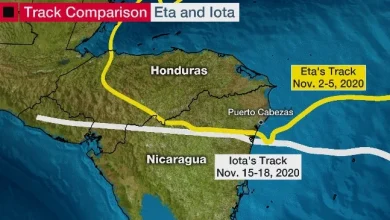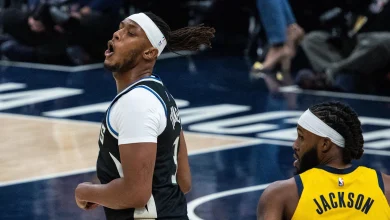Netflix’s The Perfect Neighbor Director on Why It’s Like a Horror Film

In “The Perfect Neighbor,” director Geeta Gandbhir relies on police bodycam, ringcam, and cell phone footage, as well as recorded 911 calls to tell the story of a minor neighborhood dispute in Florida that escalated into deadly gun violence when Ajike Owens, a young Black mother of four, was shot and killed by her neighbor, Susan Lorincz, a white woman.
Now streaming on Netflix, the doc, which nabbed a jury prize at Sundance this year and was acquired by Netflix for a reported $5 million, is part of a growing number of nonfiction films that utilize bodycam footage. Last year’s Oscar-nominated, New Yorker-produced doc short “Incident” relied entirely on bodycam and security footage, and this year’s “2000 Meters to Andriivka” about the Russia-Ukraine war incorporates Ukrainian Army bodycam video.
“I feel like it’s not just a trend in documentary, it’s a trend in the world,” says Gandbhir. “We now live in a world where making media is in the hands of anyone.”
For “The Perfect Neighbor,” Gandbhir decided against using talking heads, recreations or any traditional doc storytelling techniques for several reason — the first being that she didn’t want to “retraumatize” Owen’s family or the community.
“We had all the material, so why make them talk about what happened and relive it?” says Gandbhir. “The body camera footage is undeniable. It’s institutional footage, but there isn’t the bias of us as filmmakers, as journalists, or as reporters on the ground. For audiences who so often now question the veracity, authenticity, and perspective, I feel like they cannot deny that this is the series of events that happened.”
The director also wanted to “flip the body camera footage on its head.”
“Police bodycam footage is usually used to surveil communities,” Gandbhir says. “It’s used to defend the police. For people of color and for vulnerable communities, it’s used to criminalize us. To dehumanize us. It’s a tool of surveillance, and I wanted to take it and flip it back, subverting it to show this beautiful community as it was before. Like really use the footage – and we shouldn’t have to do this – to humanize the people in that community.”
Gandbhir worked with editor Viridiana Lieberman to condense 30 hours of footage into a 97-minute documentary.
“We chose when to let things play out, and we chose when to speed it up,” adds Gandbhir. “The idea is that there is an idyllic little town, and a looming threat exists, with only the kids recognizing it. The adults, including the police, just saw Susan as a nuisance.”
In the doc, one adult neighbor tells the police, “That lady (Lorincz) is always messing with people’s kids.” She points to an open lot where Black and white children like to horse around. “She bossy,” says a little girl, identifying Lorincz as an angry “Karen.”
Leading up to the 2023 shooting, Lorincz called 911 consistently over a two-year period, complaining that Owens’ children and other neighborhood children were making too much noise and playing on “her property.” The police first responded in February 2022, coming out to interview various neighbors after Lorincz accused Owens of throwing a “no trespassing” sign at her. That was followed by a steady run of police visits to the Florida neighborhood.
Gandbhir describes the pace of the film as “a slow burn.”
“You have these revelations that make you deeply uncomfortable throughout,” she says. “It’s a horror film in many ways.”
Lieberman intentionally slowed down the film’s chilling shooting climax, which was not caught on camera. The editor used audio recordings from doorbell cameras and a series of 911 calls to give audiences a sense of the confrontation, which is far different from the life-and-death scenario Lorincz describes to police officers.
“That night certainly needed to be unpacked in different steps to be fully experienced,” says Lieberman. “The emotional explosion and chaos of the actual event itself took place from multiple angles. So, cutting it down and making choices about who we are with, where we are, and when, I guess you could say, was the most difficult part of making this film. The first cut of that night was 40 minutes long.”
Numerous critics have referred to “The Perfect Neighbor” as a true crime documentary, but that’s a label that makes Gandbhir “uncomfortable.”
“A lot of times when people think true crime, they think maybe of something salacious or procedural,” the director says. “This film is definitely about a crime, but I didn’t think we set out to make what is like a true crime documentary film.”
Although it may not be your typical true crime doc, like many films in that genre, “The Perfect Neighbor” includes a trial sequence, which almost didn’t make the final cut.
Lorincz, who invoked Florida’s Stand Your Ground laws, stood trial last year. Gandbhir and Lieberman had already completed the final cut of “The Perfect Neighbor” for Sundance, but after watching the trial which concluded in November 2024, they decided to try and an incorporate it into the doc.
“We had multiple conversations,” says Gandbhir. “We thought, should we interweave it in because the trial was fascinating, and suddenly you see all the people that were in the bodycam footage. It was almost like the cast suddenly shows up and you see them all in clear light.”
Ultimately Lieberman cut a four-day trial into a two-minute sequence that runs during the doc’s credits.
“Now nobody can fast forward through the credits,” quips Gandbhir.





